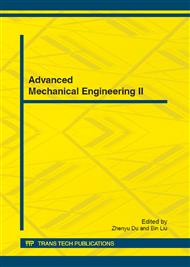p.42
p.46
p.51
p.57
p.63
p.68
p.73
p.78
p.83
Ice Shape Prediction Based on an Improved Thermodynamic Model
Abstract:
An improved model for heat transfer process is established to study the ice accretion on airfoil, which takes into consideration the influence of conduction through ice and water film compared with the classical Messinger model. Incorporating the calculation of collection efficiency by the Eulerian two-phase theory, ice accretion in specific condition on a NACA0012 airfoil is simulated with the classical model and the improved model respectively. It is shown that the simulation result with the improved model agrees well with experiment data, and the model is demonstrated to be valid in ice shape prediction and complement the shortage of the Messinger model in the estimation of freezing fraction in glaze ice condition, especially in the initial stage of ice accretion.
Info:
Periodical:
Pages:
63-67
Citation:
Online since:
July 2012
Authors:
Price:
Сopyright:
© 2012 Trans Tech Publications Ltd. All Rights Reserved
Share:
Citation:


